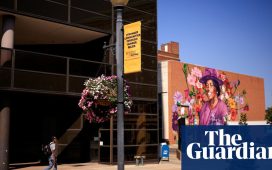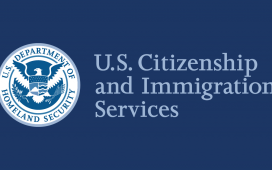When Antonio Alarcón stood on the steps of the US supreme court for a group photo with the other plaintiffs suing Donald Trump in one of the biggest immigration lawsuits of his presidency, he was flooded with memories from his US history textbooks and government classes that explained the magnitude of the court.
The supreme court affirmed the right to same-sex marriage, protected a woman’s right to have an abortion, and ended bans on interracial marriage.
On Tuesday, it will consider whether Trump’s administration illegally ended a program that allowed people like Alarcón, undocumented immigrants brought to the US as children, to temporarily live and work in the US.
“I think for many of us, we don’t do this work because we are looking for money or for fame, we do this because we know it’s the right thing to do,” Alarcón told the Guardian, referring to his activism. “And we do it because we have seen the many sacrifices of our parents, and I think this is the least thing we can do for our communities to ensure that all immigrants are respected.”
The nation’s highest court is not actually tasked with reviewing the merits of the program that allows Alarcón, who moved from Mexico to the US when he was 10, and 689,800 others to get renewable, two-year authorizations to live and work in the US: Deferred Action for Childhood Arrivals (commonly known by its acronym, Daca).
Instead, the court will tease out whether it has the jurisdiction to review the government’s decision to end Daca in September 2017 and, if so, whether the Trump administration ended it lawfully.
Mayra Joachin, a staff attorney at the National Immigration Law Center, is on the legal team challenging the government and litigated a Daca case in New York, which has been consolidated with two others for the supreme court. Joachin said despite the esoteric law central to this case, it was essential to remember the humans affected by the court’s decision.
“We are talking about a program whose position is going to have significant consequences on hundreds of thousands of individuals in the country – not just those who are Daca recipients, but also the family members, community members, teachers, supporters who will also suffer if there is no favorable decision,” Joachin said.
Polls have repeatedly shown that a majority of Americans support allowing people brought to the US as children to stay and eventually seek legal status. In June 2018, 79% of people supported this in a Quinnipiac University poll.
Even Donald Trump, who rescinded the program, has repeatedly said he wants Daca recipients, known as Dreamers, to stay in the country. “Does anybody really want to throw out good, educated and accomplished young people who have jobs, some serving in the military? Really!” Trump tweeted, days after ending the program.
Trump said the decision to end the program was meant to put pressure on Congress to pass legislation to support this population. This, however, is not a priority for the hardline immigration restrictionists in the Trump administration and his government lawyers will be fighting to shut down the program in the supreme court.
There are many ways the court could rule, including to punt on the case by saying it is not in its jurisdiction. The best case for Dreamers is that the court decides the decision to end Daca was unlawful and the program can continue. The ruling will be handed down by the end of June.
Whatever happens, Alarcón is prepared to stay and fight.
At 25, he has spent seven years advocating for himself because his parents went back to Mexico in 2012, after Alarcón’s grandparents died and they needed to care for his brother, who was still there. Alarcón was an excellent student and decided to stay in New York City, fighting for Congress to create a path to citizenship for Dreamers and their families.
Months later, Obama announced Daca in the White House Rose Garden. Suddenly, Alarcón could attend university, work and travel to see his parents.
Since Trump rescinded Daca, uncertainty has trailed the program’s recipients. The recision was blocked by courts – allowing people in the program to renew their applications but not allowing new applications, though the Migration Policy Institute estimates 1.3 million people qualify under the strict criteria.
“For many of us it’s not the end. We will continue to fight for justice, continue to fight for bigger actual reform. We need to make sure we fight for immigration reform next year or the year after,” Alarcón said.
On Tuesday, Alarcón will be in the courtroom, demanding that the justices recognize the young undocumented immigrant, determined to remain in the US.
“[I’ll] just try to look in their eyes and let them know that we are there and we are humans and hopefully they will see the reality that we’re going through – the pain and suffering that we meet every single morning.”








